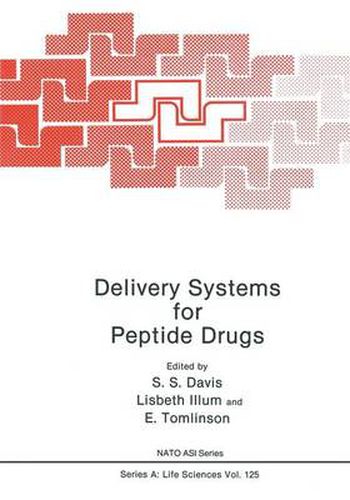Readings Newsletter
Become a Readings Member to make your shopping experience even easier.
Sign in or sign up for free!
You’re not far away from qualifying for FREE standard shipping within Australia
You’ve qualified for FREE standard shipping within Australia
The cart is loading…






This title is printed to order. This book may have been self-published. If so, we cannot guarantee the quality of the content. In the main most books will have gone through the editing process however some may not. We therefore suggest that you be aware of this before ordering this book. If in doubt check either the author or publisher’s details as we are unable to accept any returns unless they are faulty. Please contact us if you have any questions.
Recent years have seen enormous advances in the field of protein and peptide engineering and a greater understanding in the way in which biological response modifiers function in the body. It is now possible through the use of recombinant DNA techniques, or by solid phase protein synthesis, to produce significant quantities of a wide variety of regulatory agents that are therapeutically applicable. The list of these response modifiers expands almost daily to include interferons, macrophage activation factors, neuropeptides and agents that may have potential in cardiovascular disease, inflammation, contraception etc. Prospects to use some of these materials in medicine have reached the stage where products have either been approved by regulatory authorities or are the subject of applications as investigatory drugs or as new therapeutic agents. In some uses the pertinent agent will be administered on an acute basis in the form of a simple injection, as, for example, the use of a tissue plasminogen activator for the treatment of coronary infarct. In other cases regulatory proteins and peptides are indicated for chronic therapy and here they will need to be administered by an appropriate delivery system. Unfortunately, the research on delivery systems for peptides and proteins has not kept pace with the rapid progress in biotechnology and, consequently, there are presently few systems that are entirely appropriate for the administration of macromolecular drugs according to complex dosage regimens, (eg intermittent and pulsed therapy). Furthermore essential pharmacokinetic and pharmacodynamic data may be missing.
$9.00 standard shipping within Australia
FREE standard shipping within Australia for orders over $100.00
Express & International shipping calculated at checkout
This title is printed to order. This book may have been self-published. If so, we cannot guarantee the quality of the content. In the main most books will have gone through the editing process however some may not. We therefore suggest that you be aware of this before ordering this book. If in doubt check either the author or publisher’s details as we are unable to accept any returns unless they are faulty. Please contact us if you have any questions.
Recent years have seen enormous advances in the field of protein and peptide engineering and a greater understanding in the way in which biological response modifiers function in the body. It is now possible through the use of recombinant DNA techniques, or by solid phase protein synthesis, to produce significant quantities of a wide variety of regulatory agents that are therapeutically applicable. The list of these response modifiers expands almost daily to include interferons, macrophage activation factors, neuropeptides and agents that may have potential in cardiovascular disease, inflammation, contraception etc. Prospects to use some of these materials in medicine have reached the stage where products have either been approved by regulatory authorities or are the subject of applications as investigatory drugs or as new therapeutic agents. In some uses the pertinent agent will be administered on an acute basis in the form of a simple injection, as, for example, the use of a tissue plasminogen activator for the treatment of coronary infarct. In other cases regulatory proteins and peptides are indicated for chronic therapy and here they will need to be administered by an appropriate delivery system. Unfortunately, the research on delivery systems for peptides and proteins has not kept pace with the rapid progress in biotechnology and, consequently, there are presently few systems that are entirely appropriate for the administration of macromolecular drugs according to complex dosage regimens, (eg intermittent and pulsed therapy). Furthermore essential pharmacokinetic and pharmacodynamic data may be missing.